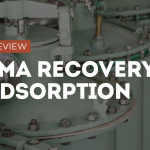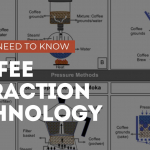What’s the Fundamental Difference Between Ground Coffee and Soluble Coffee?
Coffee has become an essential part of daily routines worldwide, but navigating the various forms of coffee products can be confusing. The two most common types consumers encounter are ground coffee and soluble (instant) coffee. While both deliver caffeine and coffee flavor, they differ significantly in production, preparation, taste, and overall experience.
Ground coffee consists of physically ground coffee beans that require brewing to extract flavor, while soluble coffee is pre-brewed coffee that has been dehydrated into powder or crystals that dissolve instantly in water. This core difference affects everything from flavor complexity to convenience, price point, and environmental impact.
Understanding these differences helps coffee drinkers make informed choices based on their priorities—whether that’s convenience, flavor depth, equipment needs, or budget. Let’s explore each type in detail before comparing them directly.
What Exactly Is Ground Coffee and How Is It Made?
What Is Ground Coffee?
Ground coffee is simply roasted coffee beans that have been mechanically ground into smaller particles. These particles retain the bean’s essential oils, aromatic compounds, and flavor characteristics, just in a form that increases surface area for efficient extraction when hot water is added. Ground coffee is not “instant” — it requires a brewing process where water passes through the grounds to extract the flavor compounds.
How Are Coffee Beans Ground?
The journey from whole bean to ground coffee involves several steps:
- Harvesting and Processing: Coffee cherries are harvested, processed to remove the fruit, and the resulting green beans are dried.
- Roasting: Green beans undergo roasting at high temperatures, developing flavor profiles ranging from light to dark roasts.
- Grinding: Roasted beans are ground in burr or blade grinders to specific particle sizes depending on the intended brewing method.
Commercial operations use industrial grinders with precise calibration, while home consumers might use anything from hand grinders to electric burr or blade grinders.
Why Does Grind Size Matter?
Different brewing methods require specific grind sizes to achieve optimal extraction:
- Extra-coarse grinds: Cold brew (12-24 hour immersion)
- Coarse grinds: French press, percolator
- Medium-coarse grinds: Chemex and other pour-over methods
- Medium grinds: Drip coffee makers, Aeropress (longer steep)
- Medium-fine grinds: Cone-shaped pour-over brewers
- Fine grinds: Espresso, Aeropress (shorter steep)
- Extra-fine grinds: Turkish coffee
The correct grind size ensures proper extraction rates—too coarse and the coffee will be under-extracted (weak, sour); too fine and it will be over-extracted (bitter, harsh).
How Long Does Ground Coffee Stay Fresh?
Ground coffee’s main weakness is its shortened shelf life. Once ground, coffee begins losing volatile compounds immediately:
- Ground coffee is at peak flavor within 30 minutes of grinding
- Noticeable flavor loss occurs within hours
- Significant degradation happens within 1-2 weeks, even in proper storage
- May remain acceptable for 3-4 weeks if stored properly
For optimal freshness, coffee should be ground immediately before brewing. When this isn’t possible, storing ground coffee in an airtight, opaque container away from heat, moisture, and light helps preserve quality.
What Brewing Methods Work With Ground Coffee?
Ground coffee can be brewed through numerous methods, each extracting different flavor profiles:
- Pour-over (Hario V60, Chemex, Kalita Wave)
- French press
- Drip coffee makers
- Espresso machines
- AeroPress
- Cold brew
- Percolator
- Moka pot
- Turkish/Greek coffee
Each method requires specific equipment and techniques but offers customizable results.
What Is Soluble Coffee and How Is It Produced?
What Is Soluble (Instant) Coffee?
Soluble coffee, commonly known as instant coffee, is pre-brewed coffee that has been dehydrated into dry fragments or powder that dissolve when added to hot water. Unlike ground coffee, no brewing or filtering is required—simply add water, stir, and drink.
How Is Instant Coffee Manufactured?
The production of soluble coffee involves complex industrial processes:
- Standard Coffee Brewing: First, coffee beans are roasted and ground, then brewed in large industrial equipment to create a concentrated coffee extract.
- Dehydration: This brewed coffee is then dehydrated through one of two primary methods:
Spray-Drying Process:
- The coffee extract is sprayed as a fine mist into a chamber with hot air (around 480°F/250°C)
- Water evaporates immediately, leaving behind dry coffee particles
- Results in powdery, sometimes more bitter instant coffee
- More economical but generally less flavor-preserving
Freeze-Drying Process:
- Coffee extract is frozen to about -40°F (-40°C)
- The frozen coffee is broken into granules
- Granules undergo sublimation in a vacuum chamber where ice turns directly to vapor
- Results in larger crystals with better aroma retention
- More expensive but better flavor preservation
Some premium instant coffees undergo additional aromatization processes where volatile compounds captured during processing are added back to the final product.
How Has Instant Coffee Evolved?
Invented in the early 1900s and popularized after World War II, instant coffee has undergone significant development:
- First Generation: Basic spray-dried powders with minimal flavor complexity
- Second Generation: Agglomerated particles with improved dissolution
- Third Generation: Freeze-dried crystals with enhanced aroma retention
- Modern Premium Instants: Specialized processing techniques, higher-quality beans, and micro-ground coffee additions
Recent innovations from specialty coffee companies have dramatically improved instant coffee quality, narrowing (though not eliminating) the taste gap with freshly brewed coffee.
How Long Does Soluble Coffee Last?
One of soluble coffee’s greatest advantages is its remarkable shelf stability:
- Unopened packages can last 2-20 years depending on packaging
- Opened containers remain usable for 6-12 months if kept dry
- Resistant to staleness compared to ground coffee
- Virtually immune to mold when properly stored
This stability makes instant coffee ideal for emergency supplies, remote locations, and infrequent coffee drinkers.
How Do Ground and Soluble Coffee Compare Directly?
Taste Profile and Complexity
Ground Coffee:
- Fuller flavor spectrum with distinguishable origin characteristics
- Brighter acidity and more pronounced aromatics
- Capable of expressing subtle flavor notes (fruity, floral, chocolate, etc.)
- Preserves coffee oils that contribute to mouthfeel and crema
- Quality varies dramatically based on bean origin, processing, roast level, and brewing method
Soluble Coffee:
- Generally flatter flavor profile with less aromatic complexity
- Often stronger roasty notes, sometimes with increased bitterness
- Limited ability to express origin characteristics
- Lacks oils that contribute to mouthfeel
- Premium versions have significantly improved but rarely match freshly brewed coffee
Brewing Process and Equipment Requirements
| Aspect | Ground Coffee | Soluble Coffee |
|---|---|---|
| Equipment needed | Brewing device (French press, drip machine, etc.) | Cup or mug |
| Filtration | Usually requires filters (paper, metal, cloth) | No filtration required |
| Water temperature control | Important for optimal extraction | Less critical |
| Skill required | Moderate learning curve for best results | Minimal skill required |
| Preparation time | 3-10 minutes depending on method | Under 30 seconds |
| Cleanup | Disposal of grounds, washing equipment | Rinse mug only |
Convenience Factors
Ground Coffee:
- Requires dedicated brewing equipment
- Needs measuring of coffee and water
- Takes several minutes to prepare
- Creates waste (used grounds, filters)
- Requires cleaning of equipment
Soluble Coffee:
- Requires only hot water and a spoon
- Easily adjustable strength
- Dissolves in seconds
- No brewing waste
- Extremely portable
Price and Value Considerations
Ground Coffee:
- Wide price range ($0.30-$2.00+ per cup)
- Higher cost for specialty single-origin beans
- Additional costs for brewing equipment
- Better value for quality-focused consumers
Soluble Coffee:
- Generally cheaper ($0.10-$0.70 per cup)
- Premium versions can cost more than basic ground coffee
- No equipment costs beyond a kettle
- Better value for convenience-focused consumers
Environmental Impact
Ground Coffee:
- Spent coffee grounds are compostable
- Some brewing methods require disposable filters
- Equipment typically has long lifespan
- Requires energy for brewing
- Packaging often includes valves and composite materials
Soluble Coffee:
- No waste from spent grounds
- Often packaged in glass jars (recyclable) or single-serve packets
- Lower energy footprint for preparation
- Higher energy footprint during manufacturing
- Smaller shipping volume per serving
Caffeine Content and Consistency
Caffeine content varies widely, but general patterns exist:
Ground Coffee:
- Arabica beans: 0.8-1.4% caffeine content
- Robusta beans: 1.7-4.0% caffeine content
- Typical cup (8oz): 70-140mg caffeine, varies by brewing method
- Light roasts generally contain more caffeine than dark roasts
Soluble Coffee:
- Often made primarily with Robusta beans (higher caffeine)
- Typical cup (8oz): 30-90mg caffeine
- More consistent caffeine delivery between servings
- Some brands offer decaffeinated versions
When Should You Choose Ground vs. Soluble Coffee?
When Is Ground Coffee the Better Choice?
Ground coffee excels when:
- Flavor is your primary consideration
- You have time for proper brewing
- You’re at home with access to equipment
- You enjoy the ritual of coffee preparation
- You want to explore different brewing methods
- You appreciate the sensory experience of fresh coffee
- You’re serving coffee to guests or in a café setting
When Does Soluble Coffee Make More Sense?
Soluble coffee is preferable when:
- Convenience and speed are paramount
- You’re traveling or camping
- No brewing equipment is available
- You need consistent results with minimal effort
- You’re making coffee-flavored recipes
- You want to avoid coffee waste
- You’re an infrequent coffee drinker
- Storage space or shelf-life is limited
Can You Use a Hybrid Approach?
Many coffee lovers adopt a situational approach:
- Ground coffee for morning rituals and weekends
- Soluble coffee for work, travel, or emergencies
- Premium instant for specific situations (camping, flights)
- Different options for different household members
Common Misconceptions About Ground and Soluble Coffee
Myths About Ground Coffee
Myth: Darker roasts have more caffeine. Reality: Lighter roasts typically contain slightly more caffeine by weight.
Myth: Ground coffee stays fresh for months. Reality: Notable flavor degradation begins within days of grinding.
Myth: All ground coffee should be stored in the refrigerator. Reality: Refrigeration can introduce moisture and odors; airtight containers in cool, dark places are generally better.
Myths About Soluble Coffee
Myth: Instant coffee isn’t “real” coffee. Reality: It is real coffee, just pre-brewed and dehydrated.
Myth: All instant coffee tastes the same. Reality: Significant quality differences exist between brands and processing methods.
Myth: Instant coffee contains artificial ingredients. Reality: Most instant coffee contains only coffee, though some flavored versions include additives.
How to Choose Between Ground and Soluble Coffee: A Decision Guide
When deciding between ground and soluble coffee, consider these priorities:
- If taste is your top priority: Choose ground coffee, freshly ground if possible.
- If convenience matters most: Choose soluble coffee.
- If you’re on a tight budget: Basic soluble coffee is most economical.
- If you want the best of both worlds: Consider premium freeze-dried instant coffee.
- If you’re just starting your coffee journey: Begin with soluble coffee while learning about brewing methods.
- If you’re environmentally conscious: Consider ground coffee with reusable filters or compostable pods.
Conclusion: Finding Your Perfect Cup
The choice between ground and soluble coffee ultimately comes down to balancing flavor expectations against convenience needs. While traditional coffee enthusiasts often favor ground coffee for its superior taste profile and sensory experience, soluble coffee offers undeniable convenience that fits many modern lifestyles.
With recent innovations in instant coffee production, the quality gap continues to narrow, giving consumers more options than ever before. Many coffee lovers find that keeping both options on hand allows them to enjoy the right coffee experience for any situation.
Whether you’re savoring a carefully crafted pour-over on a lazy Sunday morning or quickly dissolving a quality instant coffee before rushing to work, understanding the differences between these coffee types helps you make informed choices for your perfect cup.




